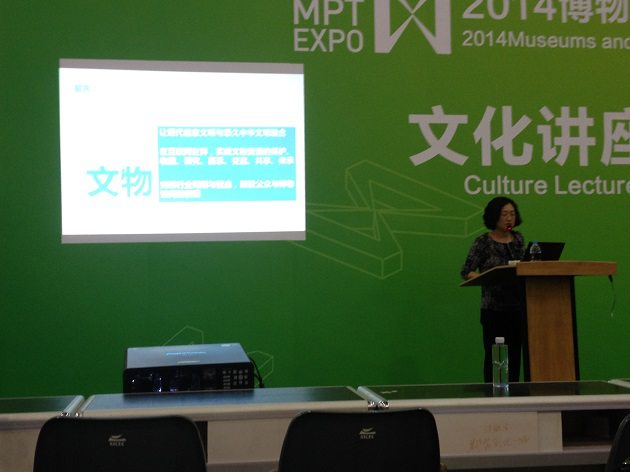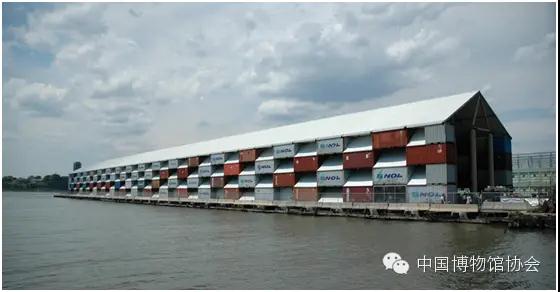【 Expo Seminar Series 】Wang Li of the National Cultural Heritage Administration talks about the application prospect of cultural relic census data
- MPT-EXPO
- 2021-01-11 11:55

On November 25, Wang Li, deputy director of the State Administration of Cultural Heritage's census office, delivered a report on "The First National Survey of Movable Cultural Relics: Application Prospects of Cultural Relics Survey Data" at the Expo. Director wang mainly around the theme "how to meet the Internet era of cultural relics", specifically from the "museum of cultural relics census - the development of new opportunities", "cultural relics census - face to face with challenge, take the initiative to meet the new technological revolution", "cultural relics census -- the three goals of three systems" and "connectivity, intelligence sharing - the Internet under the thinking of census data application prospect" these four aspects.
Heritage Survey -- a new opportunity for museum development.
Wang said that the survey of movable cultural relics is the first nationwide comprehensive survey of movable cultural relics since the founding of the People's Republic of China 65 years ago, showing the characteristics of a long time, great intensity, wide range, many types and big data. From the perspective of time range, the census lasted five years from November 2012 to December 2016. At present, the task of cultural relics identification and information collection has been basically completed, and the work of collection identification and data review is under way. From the perspective of time span, the survey not only covers the prehistoric stage and historical period, but also extends to some important art works from 1949 onwards to modern times. It is worth noting that the census only covers state-owned entities, including state organs, public institutions, state-owned and state-holding enterprises and the People's Liberation Army Armed Police Force, not private entities or enterprises.
Cultural Relics Survey: Face the challenge, take the initiative to meet the new technological revolution.
At present, the digitalization degree of China's museum industry is not high. Although many large museums have their own collection databases, they cannot realize interconnection and sharing. Other similar businesses, such as archives, libraries and galleries, are also in the "paper age" of their collections. Therefore, in the face of the arrival of the era of big data, we should take the initiative to face up to the challenges.
Heritage census -- three systems corresponding to three objectives.
For the census of the three major goals: to master cultural relic resources status quo, to set up the login system, provide public services, the state administration of cultural heritage has established three corresponding database system, namely the cultural relics login information subsystem, integrated management subsystem and social service subsystem, and established the relevant digital resources use security system, the protection of the rights of collection units, promote public services and innovative service.
Interconnection and wisdom sharing: the application prospect of census data under the Internet thinking.
First of all, the heritage survey data should meet the needs of society, not only to provide information such as heritage, exhibition information and cultural products query services, but also to provide better public education services. Secondly, it also meets the needs of the development of the cultural relic collection units themselves, and provides them with a unified cultural relic registration standard and a unified cultural relic information platform. In addition, it can boost the development of China's smart museum. The construction of the museum of wisdom not only needs professional skills and talents, but also needs the support of "objects" and "data". Cultural relics survey is the most important and basic work. In addition, the openness and sharing of cultural relic survey data can not only promote the interaction and exchange within the industry, but also facilitate the development and cooperation of relevant cultural and creative products.
2014-12-02
Recommended Content
-

【 Expo Seminar Series 】Wang Li of the National Cultural Heritage Administration talks about the application prospect of cultural relic census data
2021-01-11 11:55 -

2014 Pulitzker Prize winner Shigeru Ban Public Lecture -- The 6th Member Congress of China Museum Association and 2014 Museum and Related Products and Technology Expo Series Activities
2021-01-21 14:24
News
-
The 6th Member Representative Conference of China Museums Association and 2014 Museum-Related Products and Technology Expo successfully concluded
-
2014 Pulitzker Prize winner Shigeru Ban Public Lecture -- The 6th Member Congress of China Museum Association and 2014 Museum and Related Products and Technology Expo Series Activities
-
We cordially invite you to participate in the "2014 Academic Seminar of Exhibition and Communication Professional Committee of Chinese Museum Association"
-
Cultural extension facing the future -- the impression of the sixth congress and "expo"
-
The sixth congress will be held
-
【 Expo Seminar Series 】Wang Li of the National Cultural Heritage Administration talks about the application prospect of cultural relic census data
-
[Expo theme]"2014 Expo" grand opening!
-
[Expo theme] 26th Hongbo exhibition

